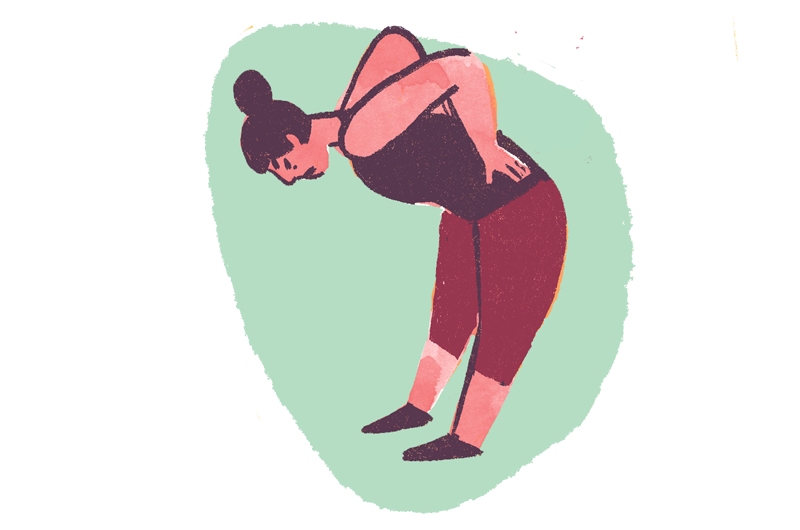How To Get Out Of Bed With Back Pain
Treating Lower Back Pain: How much bed rest is too much?

Back pain is one of the most common reasons why people visit a health care provider. The good news is that the pain often goes away on its own, and people usually recover in a week or two. Many people want to stay in bed when their back hurts. For many years, getting bed rest was the normal advice. But current studies recommend no bed rest at all and stress that staying in bed longer than 48 hours not only won't help but it may, in fact, actually delay your recovery. Here's why:
Staying in bed won't help you get better faster.
If you're in terrible pain, lying down for a day to help ease the distress may seem like a good idea, but moderating your activities and staying active in a limited way is a more effective way to control your symptoms. Research suggests that if you can find comfortable positions and keep moving, you may not need bed rest at all.
Research shows that:
- Lying down longer than a day or two day isn't helpful for relieving back pain.
- People can recover more quickly without any bed rest.
- The sooner you start moving, even a little bit, or return to activities such as walking, the faster you are likely to improve.
Long bed rest can lead to slower recovery.
Staying in bed for any prolonged period can make you stiff and increase pain. When you don't move and bend, you lose muscle strength and flexibility. With bed rest, you lose about 1 percent of your muscle strength each day. And you can lose 20 to 30 percent in a week. It becomes more difficult to return to any activity. As you become weaker and stiffer your recovery takes longer.
Who needs bed rest?
Almost no one! The only people who might require time in bed are those with unstable spinal fractures awaiting surgery.
What can I do for the pain?
Hot or cold packs often help. Some people can get pain relief from non-prescription analgesics or anti-inflammatory drugs such as ibuprofen (Advil, Motrin) or naproxen (Aleve). But no medication should be taken for an extended period of time.
When should I see a health care provider?
You should see your health care provider right away if:
- You have severe continuous back pain that lasts longer than 48 hours.
- You have severe continuous back pain and fever.
- You have back pain with accompanying pain, numbness or weakness in one or both legs or feet. Your leg symptoms are more disabling than your back symptoms.
- You have back pain and the onset of numbness in your private/genital region or changes in your ability to control your bladder and bowel function.
Manage back pain with regular exercise and professional help as required
If you have an attack of lower-back pain that is severe, continuous and not improving, assessment and treatment by a health care professional who focuses on the back or other musculoskeletal problems may help. These practitioners may use both active and passive techniques to help you feel better. Examples of passive techniques that may be used to get you moving include:
- Heat or ice
- Ultrasound
- Manipulation (massage and movement)
An active approach, like walking or water aerobics is usually the most effective. Exercise is often the best way to relieve lower-back pain.
Check with your health care provider before starting an exercise program.
Work with an expert. It may help to work with a health professional (such as a physiotherapist) who can explain which activities are right for you.
Choose exercises you enjoy. Many activities can help relieve back pain. Try to include activities that strengthen the muscles around your trunk, your abdominal muscles as well as those in your lower back. Studies show the following activities help relieve back pain:
- Lifting light weights
- Yoga
- Walking and using a treadmill
- Water aerobics
Don't cause more pain. Avoid exercises that flare up your back pain. But just because you may have back pain with some activities doesn't mean you have done any harm. A trained therapist can teach you about the principle of 'hurt versus harm'.
As you begin, you may want to avoid sit-ups with straight legs, leg lifts while lying on your back and shoulder presses or bicep curls while standing. Once you start to improve you can add more complex exercises to strengthen your back and all your core muscles.
Join an exercise program for people with chronic back pain. It might be easier to stick with exercise if you don't "go it alone."
How To Get Out Of Bed With Back Pain
Source: https://choosingwiselycanada.org/treating-lower-back-pain/
Posted by: beckvauddeas.blogspot.com

0 Response to "How To Get Out Of Bed With Back Pain"
Post a Comment